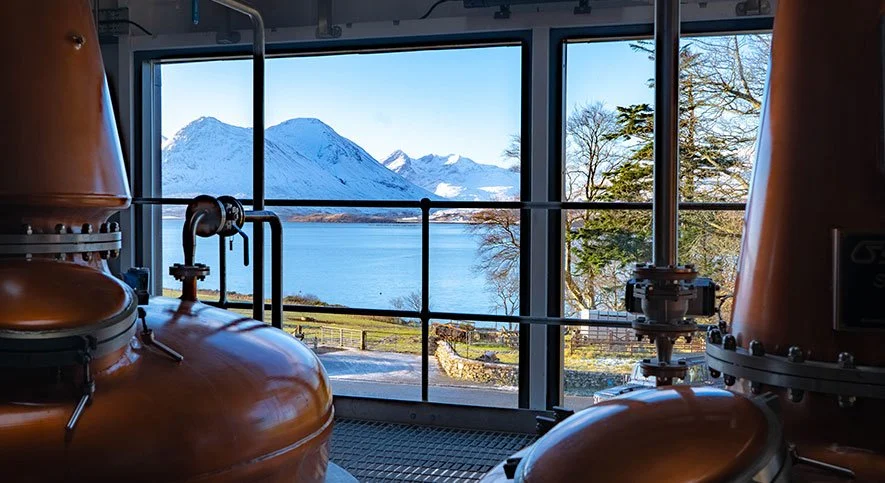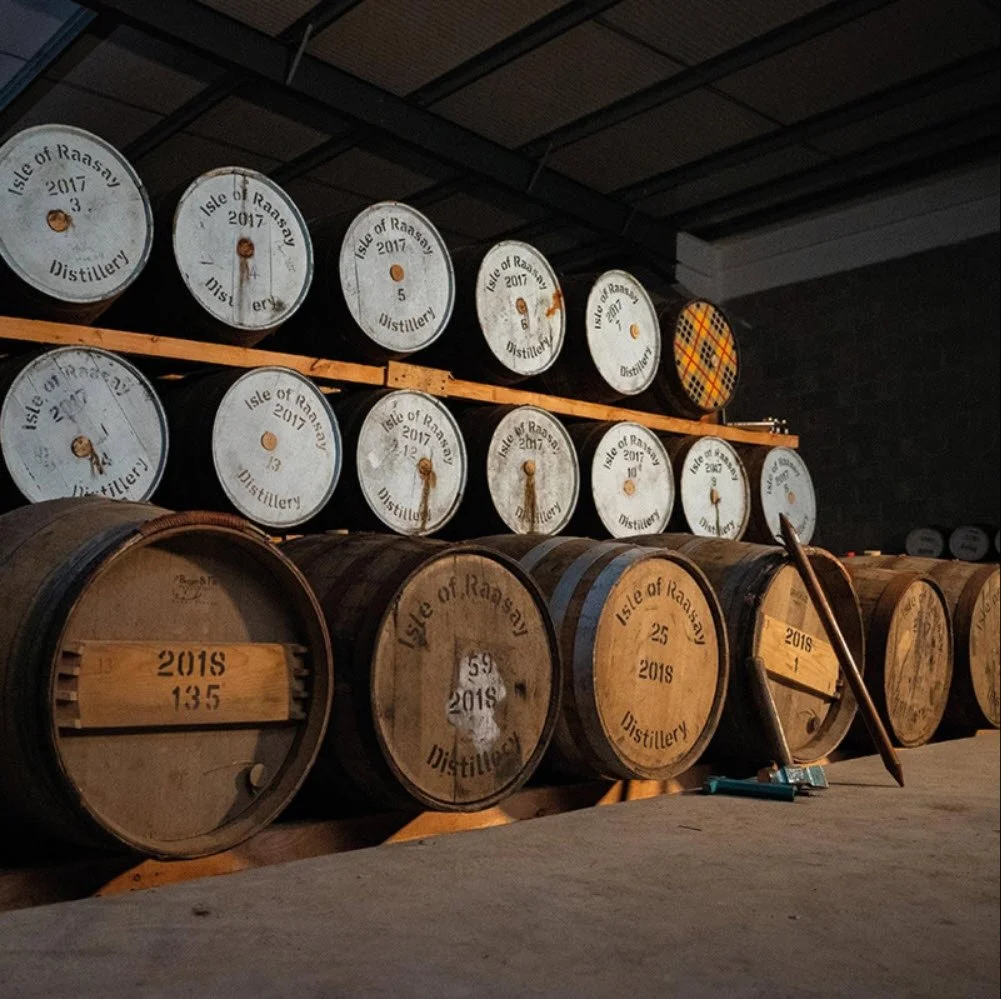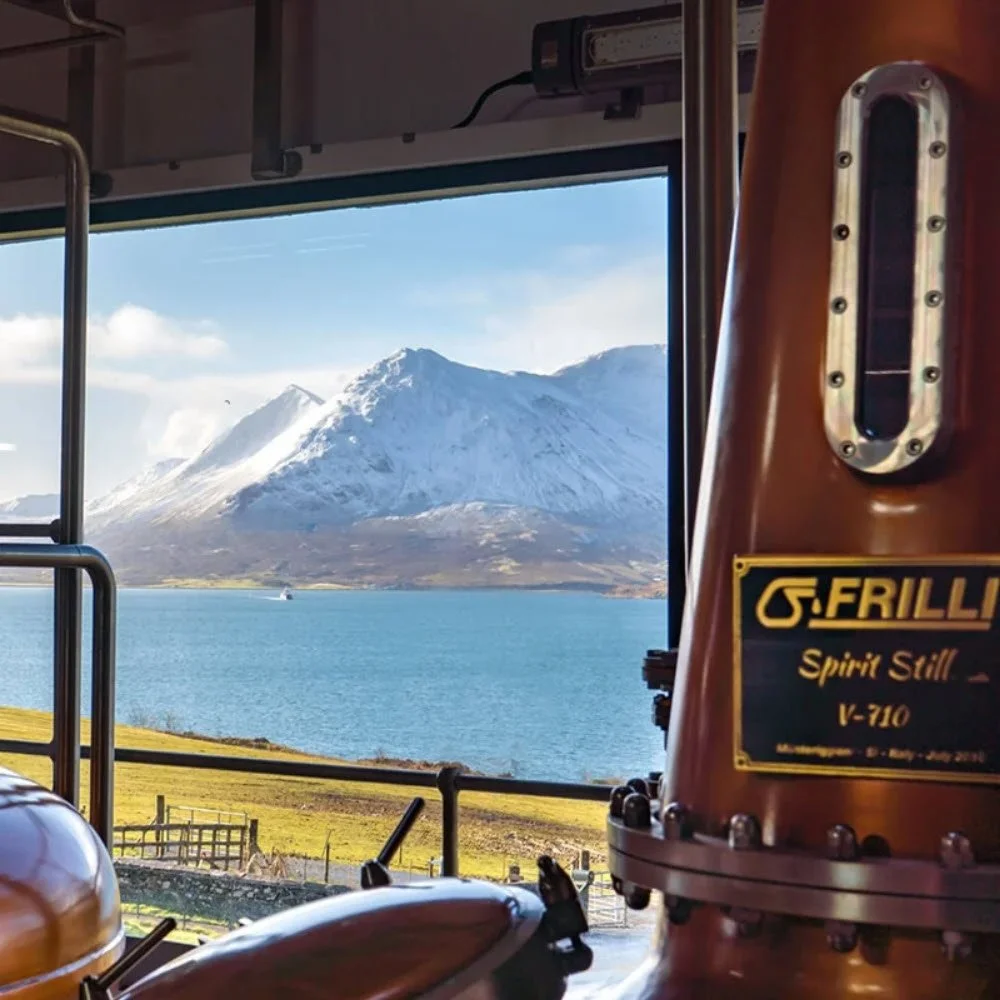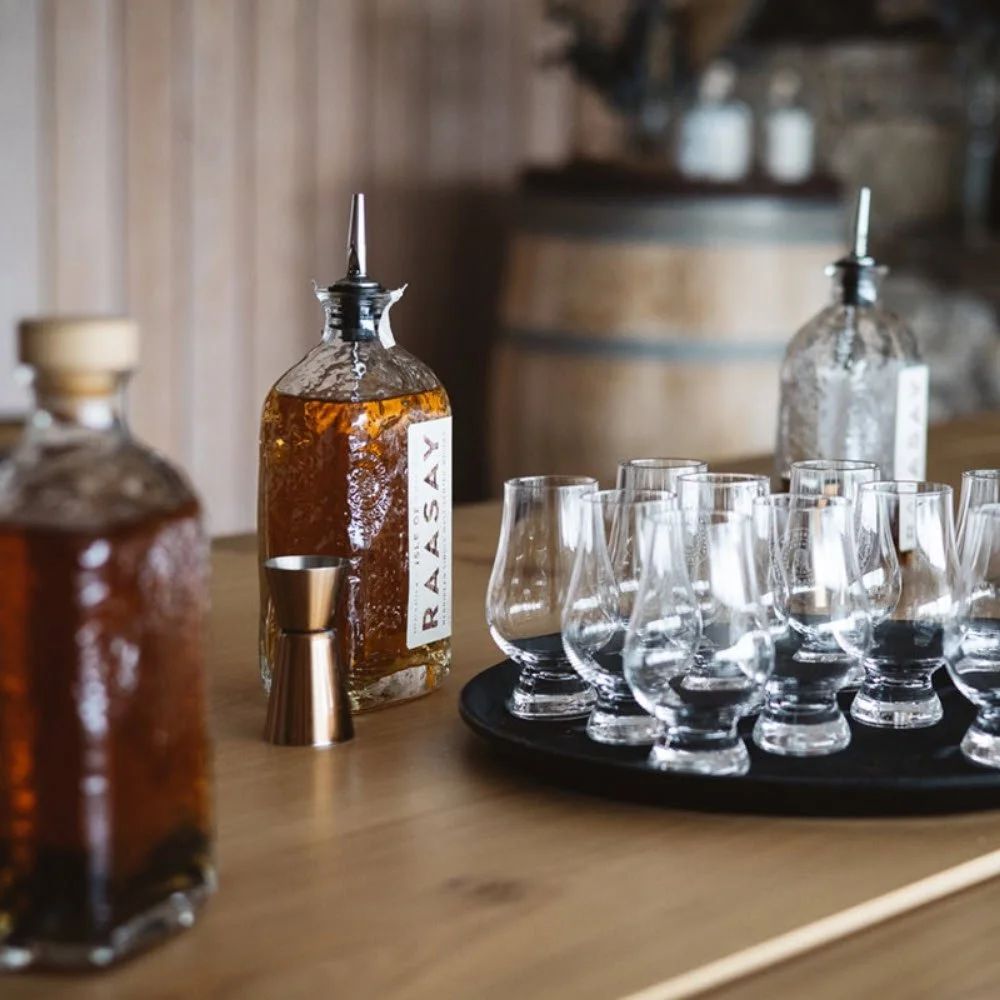Whisky Saga profile #5 - Alasdair Day @ Isle of Raasay
Alasdair Day (Isle of Raasay Distillery ©)
I recently had the opportunity to sit down with Alasdair Day, co-founder of Isle of Raasay Distillery. Here is an edited transcript of my interview with Alasdair.
Whisky Saga: Thanks for taking the time to chat with me, Alasdair. Have you had the chance to visit Norway yet?
Alasdair Day: Yes, I was there recently, at the Oslo whisky festival.
Whisky Saga: Wonderful. I have a few questions prepared. Could you start by briefly describing your background and what led you to where you are today?
Alasdair: My connection to whisky goes back to my family history, all the way to the 1820s. My family owned a company called J&A Davidson, founded in 1820 in the Scottish Borders, on the River Tweed. They were whisky blenders and licensed grocers. My great-grandfather joined the business in 1895, starting as an office boy, and eventually took over in 1923, running the grocery shop and blending whisky. Unfortunately, he had to retire after World War II, and nobody in the family was interested in keeping the business going.
Fast forward to 2009, I inherited a blending ledger - a book full of whisky recipes, some dating back to the 1890s. I thought it would be interesting to try and recreate one of those blends, and I did just that. That’s how I started, in May 2010, initially working on this as a side project while still employed full-time in the food industry. By 2012, however, the whisky landscape was changing. Stocks of aged casks were becoming scarce, and I realized that, to continue, I'd need to start investing in younger spirit or even think about building a small distillery myself.
Eventually, I partnered with Bill Dobbie, who was looking to invest in whisky as a long-term venture. Initially, my plan was to build a small-scale distillery, but Bill mentioned his interest in the Isle of Raasay. We made a visit in May 2014, stood there looking at the island, and I just felt it - this was the place to build a distillery.
Isle of Raasay Distillery ©
Whisky Saga: Was it Bill who had the idea for Raasay?
Alasdair: Yes, that's right. Bill was interested in a longer-term investment, something he could build up and leave as a legacy. Raasay was brought into the conversation through a connection of his - he was on a skiing trip, and someone suggested he should check out the island for a distillery. I went along, and it just felt right.
Whisky Saga: So the choice of Raasay was a mix of opportunity and coincidence?
Alasdair: Exactly. There wasn’t a predetermined plan that it had to be Raasay, but the moment we visited, it clicked. The island’s history, its remote location, and even the journey to get there - it all contributed to the sense of place we wanted for the distillery. Raasay has a history of illicit distilling, and being able to bring legal whisky-making back to the island felt fitting.
Whisky Saga: You mentioned that everything is done on the island. Could you expand on that?
Alasdair: Yes, absolutely. Everything happens on Raasay. We source our water from a well on-site, and we handle mashing, fermentation, distillation, maturation, and even bottling right here. We've even started experimenting with barley grown on the island. It’s a bit challenging due to the climate, but we've managed to work with local farmers to grow and harvest some barley varieties that can handle the conditions. It’s all part of creating something uniquely tied to Raasay.
Whisky Saga: That sounds like a big undertaking. What kind of challenges did you face in growing barley on Raasay?
Alasdair: Growing barley here is definitely a challenge. The climate is wet, and the soil can be quite unforgiving. We worked with Peter Martin from the Agronomy and Agriculture Institute at the University of the Highlands and Islands on Orkney, to determine which barley varieties could withstand the conditions. We tried a few varieties, including Bere barley, as well as old strains from both Iceland and Norway. The idea was to find something that could grow in the shorter season we have here. It took a few seasons to get it right, but we’ve had some successful harvests now, which is really exciting.
Whisky Saga: And what about the local community? What impact has the distillery had on Raasay?
Alasdair: The impact has been significant. Raasay is a small island - about 14 miles long and 3 miles wide with fewer than 200 residents. The distillery has brought employment opportunities, which has made a big difference. We currently employ over 40 people, which is huge for the local economy. Many young people who had moved away for work have come back to Raasay to work at the distillery. We’ve even attracted new residents from places like Mexico, Germany, South Korea, and France. The distillery has not only created jobs but also built a sense of community. We’ve got a visitor center now, a small whisky hotel (Borodale House), and a restaurant, which all add to the island’s appeal as a destination.
Whisky Saga: The distillery really has become a focal point for Raasay.
Alasdair: Yes, that’s exactly what we hoped for. We wanted the distillery to be more than just a production facility - we wanted it to be part of the community and contribute to the island’s vibrancy. The visitor experience is a big part of that. We get about 12,000 visitors a year, which is a lot for such a small island. We have rooms for guests, and we’re expanding our accommodation soon. We want people to not just visit Raasay but to stay, explore, and really get a sense of the place.
Whisky Saga: That must make for quite a busy environment, especially during the tourist season.
Alasdair: Absolutely, it does. The summer months are especially busy - our rooms are usually booked solid from April through September. But it’s great because it means people are discovering Raasay, and we’re able to share our story with them. We do close from mid-December to mid-February, though. Winter can be quite harsh here, and it’s often to get here by ferry due to weather disruptions during Winter.
Isle of Raasay Distillery ©
Whisky Saga: Speaking of production, how much whisky are you currently producing?
Alasdair: We have a one-tonne mash tun, and we run two shifts six days a week. This year, we expect to produce about 220,000 liters of pure alcohol. We split production evenly between peated and unpeated whisky. The peated malt comes in at 52 ppm phenols. We’re always experimenting with different aspects of the process to create distinct styles of whisky.
Whisky Saga: Could you elaborate on some of those experiments? What different aspects are you playing with?
Alasdair: Sure. One of the things we experiment with is fermentation time. We have both three-day and five-day fermentations. The three-day fermentations create a spirit that's a bit lighter and fruitier, while the longer five-day fermentations allow for more development of esters, giving us richer, more complex flavors. We also have cooling jackets on the washbacks, which helps control the fermentation temperature, leading to different ester profiles.
Another area of experimentation is in distillation. We have a small purifier on the lyne arm of one of our stills, which allows us to play with the level of reflux and therefore influence the spirit character. By adjusting the use of the purifier, we can create a spirit that’s either lighter and more floral or heavier and more robust, depending on what we’re aiming for.
Whisky Saga: It sounds like there’s a lot of flexibility built into the process.
Alasdair: Exactly. Flexibility is key for us. We want to be able to design different styles of whisky while staying true to the character of Raasay. For example, we’re using different yeast strains as well. We’ve used traditional distiller’s yeast, but we’ve also experimented with champagne yeast and some brewers’ yeasts. Each yeast strain brings something unique to the final spirit, whether it’s fruitier notes or more estery qualities.
Isle of Raasay Distillery ©
Whisky Saga: So there’s a real focus on crafting a diverse range of expressions. What about maturation - how are you approaching that?
Alasdair: Maturation is another area where we really try to push the boundaries. We use a variety of cask types - first-fill rye, chinkapin oak (quercus muehlenbergii), ex-Bordeaux red wine casks, and even Colombian oak (quercus humboldtii). Each cask type brings something different to the spirit. The rye casks add spice, the chinkapin gives us a lot of rich, caramelized sugars, the Bordeaux casks bring a lovely fruitiness, and the Colombian oak adds a unique character with a hint of tropical notes and a distinct sweetness.
We also mature everything on the island, which adds a maritime influence. The salty air definitely has an impact, and while it’s subtle, it’s part of what makes our whisky uniquely Raasay. The combination of different cask types and the island’s maturation conditions gives us a lot of flexibility in blending different components to create our final products.
Whisky Saga: There’s a lot of careful thought going into each stage of the process. What’s next for the distillery?
Alasdair: We’re continuing to expand. We’re adding more accommodation for visitors, as I mentioned, and we’re also looking at increasing production slightly. We don’t want to grow too fast, though. It’s important to us that we stay true to our roots and maintain the quality we’ve worked so hard to achieve. We’re also planning some new releases that I’m really excited about - some special cask finishes that showcase the versatility of our spirit. That’s what keeps things interesting for us and, hopefully, for the people who enjoy our whisky.
Isle of Raasay Distillery ©
Isle of Raasay Distillery ©
Sláinte!
-Thomas






